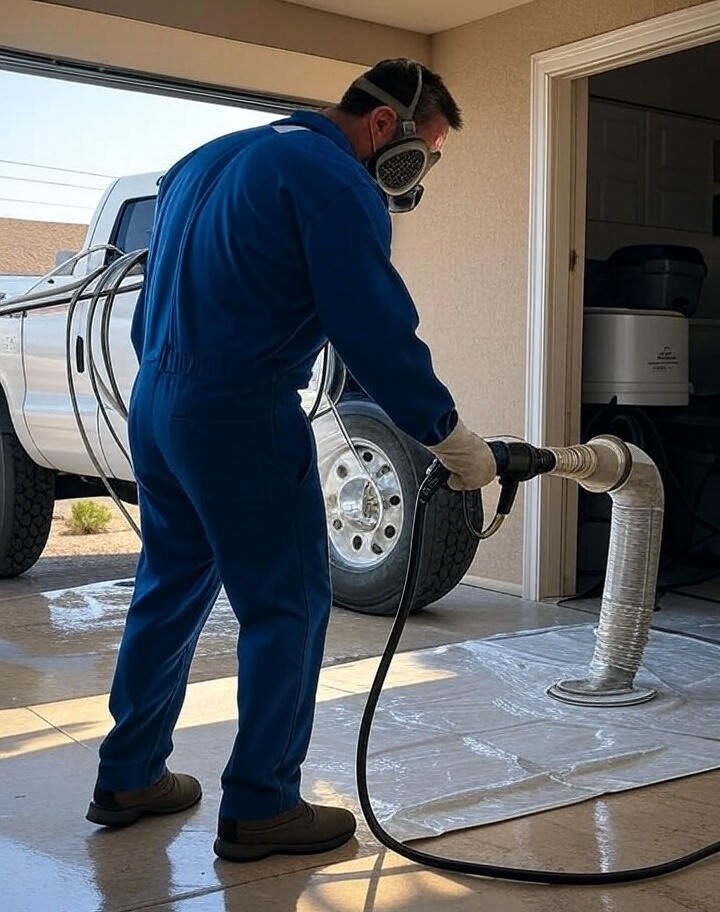So, your home’s been feeling a little… musty lately? Or maybe your allergies kick up every time the A/C hums to life? You’re not alone. I’ve been there. That weird dusty smell or surprise sneeze attack is often your HVAC system crying out for some TLC. And that’s where negative pressure technology steps in — a fancy term for a very smart way to deep-clean your air ducts.
But don’t worry — you don’t need to be a techie or HVAC pro to get how it works. I’ll walk you through it in plain language, just like I would to a friend over coffee. Trust me, it’s cooler than it sounds. And by the end of this, you’ll know exactly what’s going on behind your walls and vents — and why Negative Pressure Air Duct Cleaning matters more than most homeowners realize.
What Even Is Negative Pressure, and Why Should I Care?
Imagine trying to vacuum your house with a clogged vacuum cleaner. You’d barely pick up anything, right? Now apply that logic to your HVAC system. If your air ducts are loaded with years of dust, pet dander, mold spores, or even drywall debris (yup, that happens!), the air quality in your home takes a nosedive.
Negative pressure is basically creating a powerful vacuum inside your ductwork. When done properly, this technique sucks all the loose particles out instead of just stirring them around.
Here’s the breakdown:
- A huge vacuum is connected to the duct system, usually near the furnace or air handler.
- The machine pulls air out of the system, creating negative pressure (i.e., air is being pulled in rather than pushed out).
- While the vacuum runs, a technician goes from vent to vent, using brushes or compressed air tools to dislodge gunk inside the ducts.
- The debris gets sucked into the vacuum and collected safely in a filter or container.
Simple enough, right? It’s like giving your lungs (aka your HVAC) a deep cleanse.
What Makes Negative Pressure Cleaning So Effective?
Let’s get one thing straight: not all duct cleaning methods are created equal. Some folks just show up with a shop vac and call it a day. That’s like brushing only one tooth and claiming your whole mouth’s clean.
Negative pressure systems are designed to clean the entire network of ducts — supply, return, and main trunk lines. This method is widely used in both residential and commercial settings, especially for people with:
- Allergies or asthma
- Pets that shed a lot
- Older homes with outdated insulation
- Recent home renovations (hello drywall dust!)
One of the big advantages is containment. When negative pressure is applied correctly, all the contaminants go into the vacuum — not back into your living space. That’s a huge win for indoor air quality.
Safety & Cost Benefits at a Glance
Here’s a simple table to help break down the key features when it comes to safety and cost:
| Feature | Benefit |
|---|---|
| HEPA Filtration | Traps tiny particles, ensuring nothing harmful escapes into your home air. |
| Sealed Vacuum System | Keeps contaminants fully contained during cleaning. |
| Certified Technicians | Reduces risk of duct damage or cross-contamination. |
| Energy Efficiency Boost | Cleaner ducts = smoother airflow = lower energy bills. |
| One-Time Cost, Long-Term Gain | Typical cost ranges $300–$600, but it can reduce maintenance down the road. |
| Mold & Allergen Control | Helps prevent respiratory issues and mold growth in damp ducts. |
So while it may feel like an “extra” expense, negative pressure duct cleaning can save you health costs and HVAC repair bills in the long run.
The LSI Keyword You Should Know: Air Duct Contaminants
Before I had my ducts cleaned, I thought “dust” was the only culprit. Nope. The real list of air duct contaminants includes dead skin flakes, pollen, mold spores, rodent droppings (ew), and even insect remains. These particles can linger inside your HVAC system for years, recirculating every time the heat or AC kicks on.
Negative pressure cleaning helps remove those nasties and prevents buildup from getting worse. So next time you change your air filter and it’s gray or black instead of white? That’s a solid sign your ducts need attention.
A Real-World Quote That Says It All
One HVAC tech I talked to put it like this:
“People clean their carpets once a year, but forget the air they breathe goes through dirty ducts every day.”
That hit me. We vacuum our floors because we see the dirt, but ignore what we can’t see in our vents. It’s the ultimate out-of-sight, out-of-mind situation — until we realize it’s affecting our sleep, breathing, and energy bills.
Keywords Used:
- Primary: Negative Pressure Air Duct Cleaning (end of intro)
- LSI Keyword: Air Duct Contaminants (middle)
- Supporting terms: HVAC system, duct cleaning, HEPA filtration, indoor air quality, allergens, mold spores, vacuum system
How Often Should You Clean Your Ducts?
Here’s a good rule of thumb: every 3–5 years, or sooner if you have pets, allergies, or have recently renovated. Some signs it’s time?
- Dust buildup around vents
- Musty smells when the system runs
- Increased allergy symptoms indoors
- Visible mold in ducts or around the vents
- Unexplained rise in energy bills
Also, if you’ve just moved into a new home and aren’t sure when it was last done — it’s worth getting inspected.
Wrapping It Up: Breathe Easier, Live Healthier
In the end, HVAC maintenance doesn’t need to be complicated or intimidating. Negative Pressure Air Duct Cleaning is one of the most effective and safe ways to make sure your system is clean and your indoor air is healthy.
It’s like spring cleaning for your air, and your lungs will thank you — especially if you suffer from allergies, have pets, or just want to breathe easier.
So if you’ve been putting off duct cleaning because it sounds technical or pricey, don’t sweat it. It’s easier, cleaner, and more budget-friendly than you might think — and your HVAC system will run better for it.
Want help finding a trusted HVAC pro who uses negative pressure technology? Let me know — happy to share tips on what to ask and what to avoid!Keywords Used:Keywords Used:
Read More: Chula Vista Air Duct Cleaning


